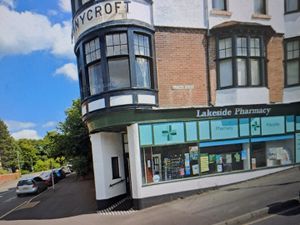Greater focus needed on site suitability, says Savills
The government should consider national policy initiatives to restore the link between planned economic growth and other growth, such as housing, according to a new report by real estate advisor Savills.
A crucial element is sustainable development, which will mean difficult decisions are required by local planning authorities (LPAs) including the potential release of Green Belt land. Effective policy will need a ‘larger than local’ approach, experts say.
The report notes that although the distribution of housing need at a national level is being addressed where local plans are up to date, it is the types of schemes gaining consent which will need to be fully aligned with market demand in order to maximise potential market absorption.
Michael Davies, planning director at Savills in Birmingham, said: “Clearly, the type of sites gaining planning consent are not always aligning with the aims of the Local Plan.
"The absorption rate of new housing will be constrained if only bringing forward housing types which serve a small part of the market. In order to fully meet housing need, the planning system needs to be designed so it both sets an appropriate overall housing target, and compels LPAs to engage with developers and land promoters to consider how suitable the sites they are bring forward are to deliver a range of housing requirements.
“The additional challenge is to ensure faster local plan production, as many are now out of date in respect of planned housing, being over five years old."
The report also found that, as a consequence, the potential for continued growth in existing employment hubs will be limited by the lack of available housing to attract new workers to the area.
Equally, this is having a knock-on effect to the developments coming forward to the market. In 2022, only 29 per cent of the areas with the greatest levels of residential development planned were also recording the highest volumes of employment.
It is believed that this limitation in housing stock encourages less sustainable commuting patterns, hindering attempts to reach net zero carbon targets unless they are supported by new public transport infrastructure, which frequently will require planning across local authority boundaries.
Underlining this challenge is the finding that distances between sites allocated for housing and the nearest train stations have been growing.
Across all pre-2012 allocations that Savills has data for, 38 per cent of homes were on sites within a mile of a train station, with two-fifths of those within just half a mile. Across allocations adopted after 2012, the has fallen to 28 per cent.
Likewise, the number of homes on allocated sites within one and ten miles of a train station has risen from 60 per cent to 71 per cent over the same period.
Michael added: “These findings further underline the importance of aligning housing delivery with new public transport infrastructure as settlements expand.
"In cities such as Birmingham, Wolverhampton and Coventry, which are surrounded by Green Belt designations, this may require Green Belt land to be release in order to ensure the potential surrounding existing transport hubs is maximised.”
The failure to increase the volume of small sites at the same rate as larger schemes also has consequences for the ability to grow development capacity and the size of the housing pipeline.
“Actively planning for a greater range of site sizes, and delivering more small sites alongside the larger sites more suited to master developers and major housebuilders, would create opportunities for SME builders and new entrants and expand the total development capacity in England,” Michael added.





